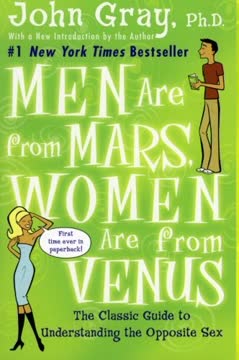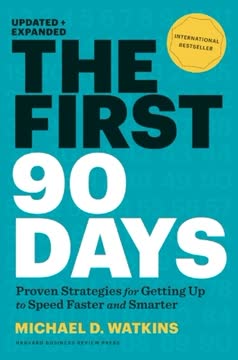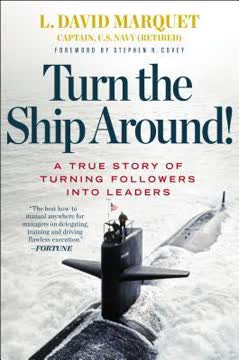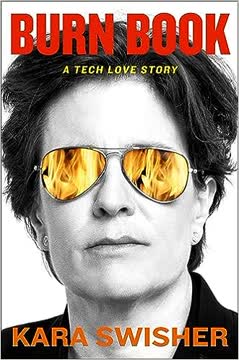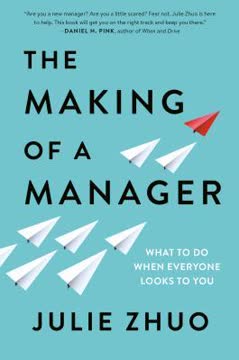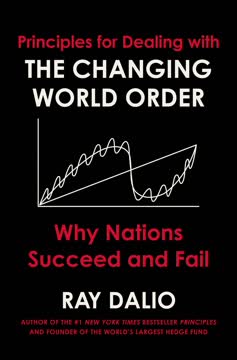نکات کلیدی
1. پارادایمهای جدید مدیریت: انتقال از تمرکز بر کسبوکار به کاربرد جهانی
مدیریت ارگان خاص و متمایز هر سازمانی است.
کاربرد جهانی. اصول مدیریت محدود به شرکتهای تجاری نیستند بلکه به تمامی سازمانها، از جمله سازمانهای غیرانتفاعی، نهادهای دولتی و مؤسسات آموزشی نیز تعلق دارند. این تغییر پارادایمی به این واقعیت اشاره دارد که عملکرد اصلی مدیریت، توانمندسازی نهادها برای تولید نتایج فراتر از خودشان، بدون توجه به بخش مربوطه است.
تحولات فرضی. فرضیات سنتی مدیریت در حال چالش هستند:
- مدیریت دیگر معادل مدیریت کسبوکار نیست
- هیچ ساختار سازمانی "درست" واحدی وجود ندارد
- مدیریت افراد نیاز به رویکردهای متنوع دارد
- فناوری و کاربران نهایی ثابت نیستند
- دامنه مدیریت فراتر از مرزهای قانونی و سیاسی است
این تغییرات نیاز به ارزیابی مجدد شیوههای مدیریت در تمامی بخشها را ایجاب میکند و بر لزوم سازگاری و دیدگاه وسیعتری در مورد اثربخشی سازمانی تأکید میکند.
2. استراتژی در عدم قطعیت: پذیرش قطعیتهای جدید برای موفقیت آینده
استراتژی این نظریه کسبوکار را به عملکرد تبدیل میکند.
قطعیتهای جدید. در عصر تغییرات سریع، استراتژی باید بر اساس قطعیتهای جدید بنا شود:
- کاهش نرخ زاد و ولد در کشورهای توسعهیافته
- تغییرات در توزیع درآمد قابلصرف
- بازتعریف عملکرد
- رقابت جهانی
- افزایش عدم تطابق بین واقعیتهای اقتصادی و سیاسی
تحولات جمعیتی. کاهش نرخ زاد و ولد در کشورهای توسعهیافته پیامدهای عمیقی خواهد داشت:
- نیروی کار پیر و تغییرات در بازارهای کار
- نیاز به افزایش بهرهوری برای حفظ رشد اقتصادی
- پتانسیل ناآرامیهای اجتماعی و سیاسی
واقعیتهای اقتصادی. استراتژیها باید به موارد زیر توجه کنند:
- تغییر رفتارها و ترجیحات مصرفکنندگان
- تغییرات در قدرت اقتصادی جهانی
- ظهور اقتصادهای مبتنی بر دانش
سازمانها باید استراتژیهای خود را به این قطعیتهای جدید تطبیق دهند تا در محیط جهانی در حال تحول، رقابتی و مرتبط باقی بمانند.
3. رهبری تغییر: تعادل بین نوآوری و تداوم در زمانهای پرآشوب
نمیتوان تغییر را مدیریت کرد. تنها میتوان از آن پیشی گرفت.
رهبری تغییر. رهبران مؤثر باید:
- سیاستهایی برای ایجاد آینده توسعه دهند
- روشهای سیستماتیک برای پیشبینی تغییرات پیادهسازی کنند
- تغییر را هم درون و هم بیرون سازمان معرفی کنند
- تغییر را با تداوم متعادل کنند
کنار گذاشتن سازمانی. رهبران باید بهطور منظم ارزیابی کنند:
- کدام محصولات، خدمات یا فرآیندها باید کنار گذاشته شوند
- کجا منابع بهطور غیرضروری برای حفظ موارد منسوخ هدر میرود
- چگونه میتوان منابع را برای نوآوری و رشد آزاد کرد
نوآوری و بهبود. رهبران تغییر بر روی:
- بهبود مستمر (کایزن)
- نوآوری سیستماتیک
- بهرهبرداری از موفقیت و ساخت بر روی نقاط قوت تمرکز میکنند
با پذیرش این اصول، سازمانها میتوانند در زمانهای پرآشوب حرکت کنند و فرهنگی از نوآوری را در حالی که ثبات و تداوم را حفظ میکنند، پرورش دهند.
4. انقلاب اطلاعات: از پردازش دادهها به بینشهای معنادار
هدف اطلاعات، دانش نیست. بلکه توانایی انجام عمل درست است.
انتقال به اطلاعات. انقلاب جدید اطلاعات بر روی:
- حرکت از "ت" (فناوری) به "ا" (اطلاعات) در فناوری اطلاعات تمرکز دارد
- ارائه بینشهای معنادار به جای صرفاً دادهها
- امکانپذیر ساختن تصمیمگیری و اقدام بهتر
نیازهای اطلاعاتی. سازمانها باید شناسایی کنند:
- چه اطلاعاتی برای تصمیمگیری نیاز است
- چگونه اطلاعات را بهطور مؤثر سازماندهی و ارائه کنند
- راههایی برای تبدیل دادهها به بینشهای قابل اقدام
اطلاعات بیرونی. حوزههای کلیدی تمرکز شامل:
- درک بازارها و نیازهای مشتری
- پیگیری تحولات فناوری
- نظارت بر روندهای اقتصادی جهانی
با اولویت دادن به اطلاعات معنادار به جای دادههای خام، سازمانها میتوانند تصمیمات بهتری بگیرند، به محیطهای در حال تغییر سازگار شوند و در اقتصاد دانش ارزش ایجاد کنند.
5. بهرهوری کارگران دانش: چالش کلیدی مدیریت در قرن 21
باارزشترین داراییهای یک نهاد در قرن 21، چه تجاری و چه غیرتجاری، کارگران دانش و بهرهوری آنها خواهد بود.
عوامل بهرهوری. شش عامل اصلی تعیینکننده بهرهوری کارگران دانش عبارتند از:
- تعریف وظایف
- خودمدیریتی و استقلال
- نوآوری مستمر
- یادگیری و آموزش مستمر
- کیفیت به جای کمیت
- برخورد با کارگران دانش بهعنوان دارایی، نه هزینه
پیامدهای سازمانی. برای افزایش بهرهوری کارگران دانش، سازمانها باید:
- وظایف و اهداف را بازتعریف کنند
- استقلال و منابع لازم برای خودمدیریتی را فراهم کنند
- فرهنگی از یادگیری و نوآوری مستمر را پرورش دهند
- معیارهای جدیدی برای اندازهگیری کیفیت و مشارکت توسعه دهند
تأثیر اقتصادی. بهبود بهرهوری کارگران دانش برای:
- حفظ مزیت رقابتی در اقتصاد جهانی
- تحریک نوآوری و رشد اقتصادی
- سازگاری با تحولات جمعیتی و نیروی کار پیر ضروری است
با تمرکز بر این عوامل، سازمانها میتوانند پتانسیل کامل کارگران دانش خود را آزاد کرده و در اقتصاد قرن 21 شکوفا شوند.
6. خودمدیریتی: ضرورت برای کارگران دانش برای به عهده گرفتن مسئولیت
روزبهروز افراد بیشتری در نیروی کار—و بیشتر کارگران دانش—باید خود را مدیریت کنند.
خودارزیابی. کارگران دانش باید درک کنند:
- نقاط قوت خود و چگونگی بهرهبرداری از آنها
- سبک کار و روشهای یادگیری مورد علاقه خود
- ارزشها و استانداردهای اخلاقی خود
مدیریت حرفهای. خودمدیریتی شامل:
- شناسایی جایگاه خود در یک سازمان
- پذیرش مسئولیت برای توسعه شخصی
- اتخاذ تصمیمات آگاهانه درباره تغییرات شغلی و فرصتها
بهبود مستمر. کارگران دانش باید:
- از تحلیل بازخورد برای پیگیری عملکرد استفاده کنند
- بهطور مستمر مهارتها و دانش خود را بهروز کنند
- به محیطهای کاری و فناوریهای در حال تغییر سازگار شوند
با به عهده گرفتن مسئولیت توسعه و مسیر شغلی خود، کارگران دانش میتوانند مشارکتهای خود را به حداکثر برسانند و در زندگی حرفهای خود رضایت بیشتری کسب کنند.
7. مشارکت و ارزشها: همراستایی نقاط قوت شخصی با نیازهای سازمانی
برای مؤثر بودن در یک سازمان، ارزشهای شخصی باید با ارزشهای سازمان همراستا باشد.
همراستایی ارزشها. عملکرد مؤثر نیازمند:
- درک ارزشها و اخلاق شخصی
- شناسایی ارزشها و فرهنگ سازمانی
- اطمینان از همراستایی بین ارزشهای شخصی و سازمانی
تمرکز بر مشارکت. کارگران دانش باید بپرسند:
- "چه چیزی باید مشارکت کنم؟"
- "چگونه میتوانم بهترین بهرهبرداری را از نقاط قوت خود داشته باشم؟"
- "سازمان بیشتر از من چه چیزی نیاز دارد؟"
تصمیمات شغلی. هنگام بررسی فرصتها، ارزیابی کنید:
- تناسب با نقاط قوت و سبک کار شخصی
- همراستایی با ارزشها و اخلاق شخصی
- پتانسیل برای مشارکت معنادار
با همراستا کردن نقاط قوت، ارزشها و مشارکتهای شخصی با نیازهای سازمانی، کارگران دانش میتوانند حرفههای رضایتبخشی ایجاد کرده و موفقیت سازمانی را به پیش ببرند.
آخرین بهروزرسانی::
FAQ
What's "Management Challenges for the 21st Century" about?
- Focus on Future Challenges: The book addresses the management challenges that organizations will face in the 21st century, focusing on future issues rather than current trends.
- Key Management Paradigms: It explores new paradigms in management, emphasizing the need for organizations to adapt to profound transitions in society, economy, and technology.
- Knowledge Worker Productivity: A significant portion of the book is dedicated to increasing the productivity of knowledge workers, which Drucker sees as crucial for future success.
- Self-Management: The book also discusses the importance of individuals managing themselves, especially in a rapidly changing work environment.
Why should I read "Management Challenges for the 21st Century"?
- Forward-Looking Insights: Drucker provides insights into future management challenges, making it essential for those looking to stay ahead in their fields.
- Practical Advice: The book offers practical advice on how to manage oneself and one's organization in a time of rapid change.
- Comprehensive Coverage: It covers a wide range of topics, from knowledge-worker productivity to the impact of demographic changes on management.
- Renowned Author: Peter F. Drucker is a respected authority in management, and his perspectives are valuable for anyone interested in the field.
What are the key takeaways of "Management Challenges for the 21st Century"?
- Embrace Change: Organizations must become change leaders, seeing change as an opportunity rather than a threat.
- Focus on Knowledge Workers: Increasing the productivity of knowledge workers is crucial for future success.
- Self-Management: Individuals must learn to manage themselves, including understanding their strengths and how they perform best.
- Strategic Thinking: Organizations need to base their strategies on new certainties, such as demographic shifts and global competitiveness.
How does Peter F. Drucker define "Management's New Paradigms"?
- Beyond Business Management: Drucker argues that management is not just business management; it applies to all organizations.
- No One Right Organization: There is no single correct way to organize; different structures suit different tasks and conditions.
- Focus on Results: Management should focus on results and performance, not just internal processes.
- Adaptability: Organizations must be adaptable to survive in a rapidly changing environment.
What is the significance of "Knowledge-Worker Productivity" in the book?
- Central Challenge: Drucker identifies increasing the productivity of knowledge workers as the most important management challenge of the 21st century.
- Quality Over Quantity: Unlike manual work, knowledge work focuses on quality and innovation rather than just output.
- Self-Management: Knowledge workers must manage themselves, taking responsibility for their productivity and contribution.
- Continuous Learning: Knowledge work requires continuous learning and teaching, making it a dynamic and evolving field.
How does "Managing Oneself" contribute to personal and professional growth?
- Self-Awareness: Individuals must understand their strengths, how they perform, and their values to manage themselves effectively.
- Career Planning: Knowing where one belongs and what contribution one can make is crucial for career success.
- Relationship Responsibility: Effective self-management includes taking responsibility for relationships and communication.
- Second Half of Life: Drucker emphasizes planning for the second half of one's life, including potential career changes or parallel careers.
What are the "Information Challenges" discussed in the book?
- Focus on Information, Not Data: Drucker emphasizes the need to focus on meaningful information rather than just data collection.
- Outside Information: Organizations need information about the external environment, including markets, customers, and competitors.
- Organizing Information: Information must be organized to be useful, requiring new concepts and methodologies.
- Decision-Making: Effective information systems support strategic decision-making and help organizations adapt to change.
What strategies does Drucker suggest for "The Change Leader"?
- Organized Abandonment: Organizations should regularly review and abandon practices that no longer contribute to performance.
- Continuous Improvement: Systematic improvement should be a part of every process, leading to innovation and change.
- Exploiting Success: Successful organizations focus on opportunities and build on their successes.
- Piloting Change: New initiatives should be tested on a small scale before full implementation to manage risks.
How does "Strategy—The New Certainties" guide organizational planning?
- Demographic Changes: Organizations must consider the impact of demographic shifts, such as aging populations, on their strategies.
- Global Competitiveness: Competing globally requires meeting the highest standards in every aspect of business.
- Economic and Political Realities: Strategies must account for the incongruence between economic globalization and political boundaries.
- Performance Definition: Organizations need to redefine performance to balance short-term results with long-term sustainability.
What are the best quotes from "Management Challenges for the 21st Century" and what do they mean?
- "One cannot manage change. One can only be ahead of it." This emphasizes the importance of proactive leadership in a rapidly changing world.
- "The most valuable asset of a 21st-century institution will be its knowledge workers and their productivity." Drucker highlights the shift from physical assets to human capital as the key to success.
- "Management exists for the sake of the institution’s results." This underscores the focus on outcomes and performance rather than just processes.
- "Managing oneself is a revolution in human affairs." Drucker points out the transformative impact of self-management on individuals and organizations.
How does Drucker address "The Governance of the Corporation"?
- Shift in Power: The rise of institutional investors has shifted power in corporations, affecting governance structures.
- Balancing Interests: Organizations must balance the interests of shareholders with those of knowledge workers, who are key assets.
- Measuring Intangibles: The challenge lies in measuring the value of knowledge workers, who are not traditional assets.
- Future Implications: The governance of corporations will need to adapt to the realities of a knowledge-based economy.
What is the role of "The Parallel Career" in managing one's life?
- Second Career: Many individuals pursue a second career in a different field, often in nonprofit organizations, after achieving success in their first career.
- Parallel Career: Some maintain their primary job while developing a parallel career, often in volunteer or community work.
- Social Entrepreneurship: Others become social entrepreneurs, using their skills and resources to address social issues.
- Planning Ahead: Drucker emphasizes the importance of planning for these transitions early in one's career to ensure fulfillment and continued contribution.
نقد و بررسی
کتاب چالشهای مدیریت در قرن بیست و یکم عمدتاً نظرات مثبتی را به خاطر بینشهای پیشروانهاش در زمینهی روندهای مدیریت دریافت میکند. خوانندگان از دیدگاه دراکر، بهویژه در مورد کارگران دانش و خودمدیریتی، قدردانی میکنند. بسیاری از آنها محتوای کتاب را حتی پس از گذشت دههها همچنان مرتبط مییابند، هرچند برخی اشاره میکنند که احساس میشود قدیمی شده است. سبک نوشتاری کتاب میتواند چالشبرانگیز باشد و شامل بخشهای تکراری و زبان متراکم است. فصل پایانی در مورد خودمدیریتی بهطور مکرر بهعنوان بخشی بسیار ارزشمند مورد تأکید قرار میگیرد. بهطور کلی، منتقدان این کتاب را بهعنوان یک خواندنی تحریککننده برای مدیران و حرفهایهایی که به دنبال درک دینامیکهای آیندهی محیط کار هستند، در نظر میگیرند.
Similar Books
